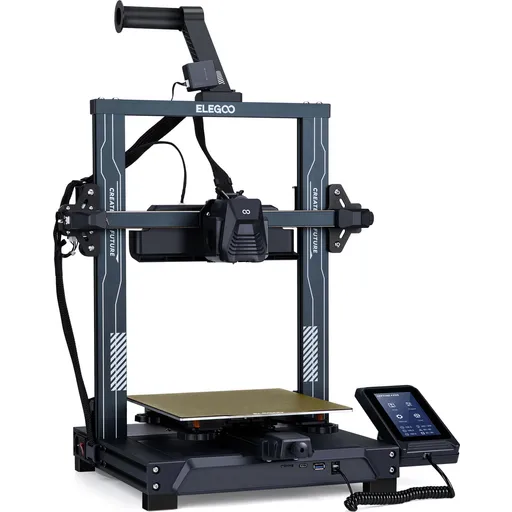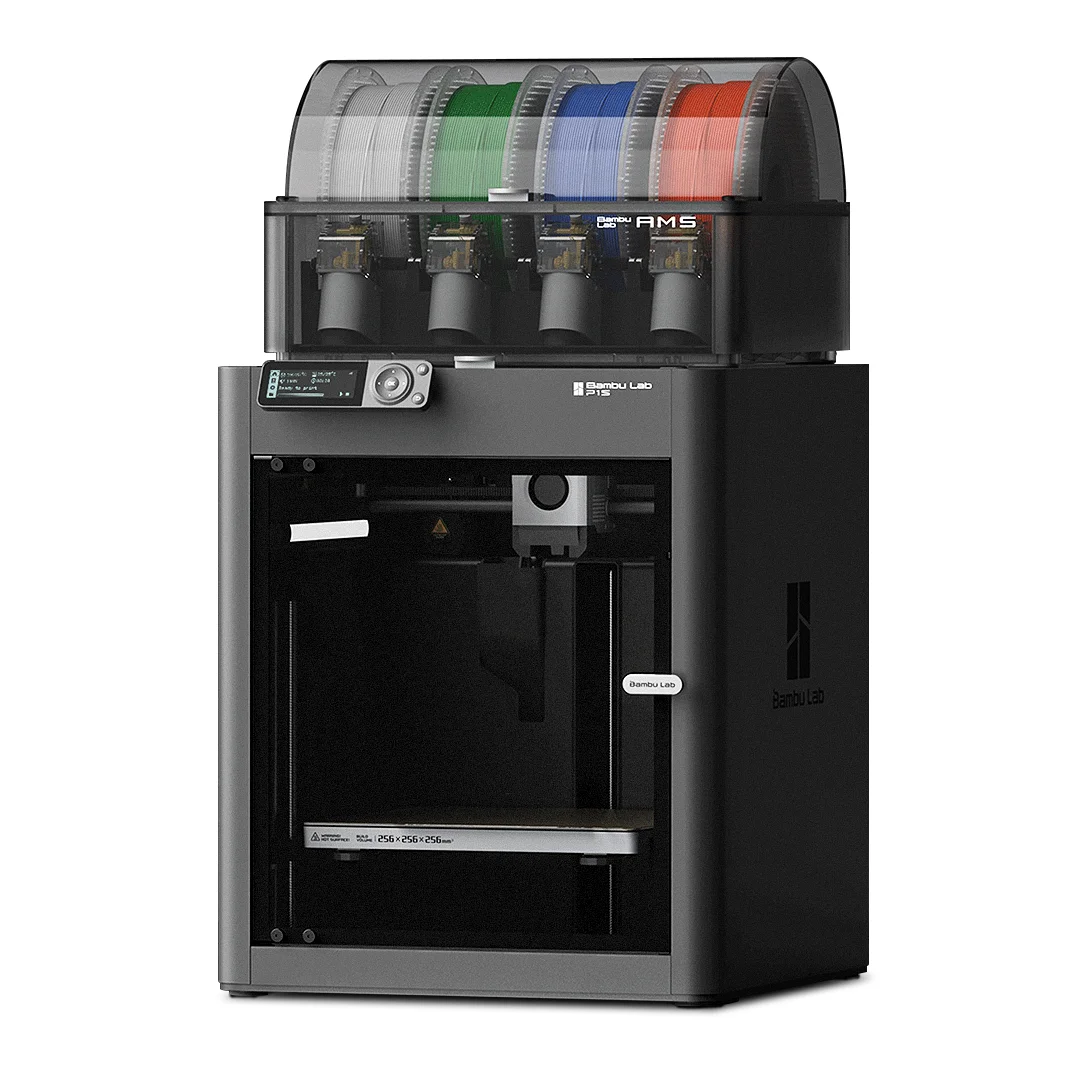Compare Neptune 4 PRO vs P1S
Comparison between the best 3D printers
Choose the best 3D printer at the best price. The cheapest 3D printers are here.
Buy a 3D printer here with 3D Fila.
 |
 |
|
| Model | Neptune 4 PRO |
P1S[BUY P1S] |
| Printing Material | Filament | Filament |
| Buy Filament for Elegoo Neptune 4 PRO | Buy Filament forBambu Lab P1S | |
| Estimated price | $359,00 | $949,00 |
| Manufacturer | Elegoo | Bambu Lab |
| Release Year | 2023 | 2023 |
| Print Volume [mm] | 225x225x265 | 256x256x256 |
| Printer Size [mm] | 475x445x515 | 389x389x458 |
| Weight [kg] | 8,9 | 12,95 |
| Power Loss Recovery | YES | YES |
| Enclosed printer | NO | YES |
| Bed Leveling | Automatic | Automatic |
| Filament End Sensor | YES | YES |
| Bed type | Heated | Heated |
| Power supply system | Direct Drive | Direct Drive |
| Standard nozzle | 0,4 | 0,4 |
| Maximum Nozzle Temperature [°C] | 300 | 300 |
| Maximum Bed Temperature [°C] | 110 | 100 |
| Maximum printing speed [mm/s] | 500 | 500 |
| Filament holder | YES | YES |
| Camera for supervision | NO | NO |
| Recommended filaments | PLA, PLA+, TPU, PETG, Nylon, ABS | PLA, PETG, TPU, PVA, PA, PA-CF, Nylon, PC |
| Recommended slicers | Bambu Studio, Super Slicer, Cura, Prusa Slicer, Orca | Bambu Studio, Super Slicer, Cura, Prusa Slicer, Orca |
| Maximum Resolution [mm] | 0,1 | 0,1 |
| Processor | ARM 64 bit | Quad ARM A7 1.2 GHz |
| Display | Touchscreen 4,3'' | Touchscreen 5'' |
| Power Supply | 310 W | 350 W |
| Connectivity | USB, microSD | Wifi, Bambu bus, Cartão SD |
| Operating systems | Windows, Linux, Macbook | Windows, Linux, Macbook |
| Date of registration in the system | 2024-07-02 | 2024-04-11 |
| Release date | 2023 | 2023 |
| Extra features | The Elegoo Neptune 4 Pro stands out for its advanced features, including pre-installed Klipper firmware, a dual-gear direct extruder with a 5.2:1 ratio, a high-temperature nozzle (up to 300°C), a flexible magnetic PEI platform, efficient cooling fans, and a 121-point auto-leveling system. The printer also features a 4.3-inch touchscreen interface, dual linear bars on the X and Y axes, and a segmented heated bed for energy savings. | The Bambu Lab P1S stands out for its out-of-the-box practicality, eliminating the need for manual adjustments with automatic calibrations such as bed leveling and vibration compensation. It features multicolor printing capability through the AMS system, allowing up to 16 colors when connecting four AMS units. With an advanced control algorithm, the P1S offers fast printing speeds without sacrificing quality. Equipped with modern features such as filament end sensor, semi-automatic belt tension, direct extruder, welded frame and all-metal hotend, along with a fully enclosed chamber, the P1S promotes a superior printing experience, supporting a wide range of materials. |
| Support for multiple colors and materials (AMS and CFS) | NO | YES |
Notes * |
||
| Cost-benefit | 7 / 10 | 7 / 10 |
| Hardware | 2.8 / 10 | 5.6 / 10 |
| Tela | . | . |
| Print volume | 3 / 10 | 4 / 10 |
| Performance | 4 / 10 | 4 / 10 |
| [BUY P1S] |
Conclusion |
| ### Conclusion When comparing the Elegoo Neptune 4 Pro and the Bambu Lab P1S, it is evident that both printers cater to different needs within the 3D printing community. The Neptune 4 Pro offers a cost-effective solution with impressive features like automatic bed leveling, a high maximum nozzle temperature, and a flexible heated bed. It is ideal for hobbyists or those new to 3D printing, providing essential functionalities without overwhelming complexity. On the other hand, the Bambu Lab P1S is designed for users who prioritize high performance and more advanced features. With its fully enclosed design, multicolor printing capabilities through the AMS system, and superior automatic calibration features, it provides a robust printing experience suited for more demanding applications. The faster printing speeds and a wider range of supported materials make it a compelling choice for professionals or serious makers. Ultimately, the decision hinges on budget and intended use. For those seeking affordability and user-friendly features, the Neptune 4 Pro is a solid pick. However, for those willing to invest more for enhanced performance and versatility, the Bambu Lab P1S stands out as the superior option. Both printers rank equally well in terms of cost-benefit, but their hardware and performance metrics suggest differing strengths that cater to varied user needs. |

